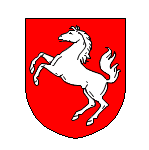Duchy of Westphalia
This article includes a improve this article by introducing more precise citations. (April 2013) ) |
Duchy of Westphalia Herzogtum Westfalen (German) | |||||||||||
|---|---|---|---|---|---|---|---|---|---|---|---|
| 1102–1803 | |||||||||||
 The Duchy of Westphalia and other western German states c. 1645 | |||||||||||
| Status |
| ||||||||||
| Capital | Feudal monarchy | ||||||||||
| Historical era | Middle Ages | ||||||||||
• Established | 1102 | ||||||||||
• Annexed by Hesse-Darmstadt | 1803 | ||||||||||
| |||||||||||
The Duchy of Westphalia (
Geography
The duchy roughly comprised the territory of the present-day
The duchy bordered on the territory of the
The Westphalian duchy formed the largest part of the Cologne electorate. Apart from the fertile Hellweg Börde north of the Haar hill range, part of the Westphalian Lowland, the ducal lands primarily comprised mountainous and densely forested areas, with some significant metal deposits and brine springs. The Hellweg section connecting the towns of Werl, Erwitte and Geseke was part of an important trade route from Aachen to Goslar.
History
Formerly part of the Saxon stem duchy along with Angria and Eastphalia, the Westphalian lands were Christianized by the Cologne archbishops at the behest of the Frankish ruler Charlemagne upon his conquests in the Saxon Wars. First parishes were established east of the Rhenish estates around Soest, where the archbishops extended their episcopal territory. Numerous monastery foundations, like Grafschaft Abbey in 1072 by Anno II of Cologne, stabilized the ecclesiastical rule.
Creation of the duchy (1102–1180)
In the fierce
Expansion (1180–1445)
Archbishop
Westphalia until the end of the Empire (1445–1806)

After the
Like most other territories of Germany, Westphalia suffered during the
After the Empire (1806–1815)
In 1807 the Kingdom of Westphalia was created although it did not include the Duchy and had its capital in Hesse at Kassel. In 1815 the Congress of Vienna awarded the Duchy of Westphalia to Prussia in exchange for important lands west of the Rhine, and the Duchy was incorporated into the Province of Westphalia the same year.
Sources
 This article incorporates text from a publication now in the public domain: Herbermann, Charles, ed. (1913). "Westphalia". Catholic Encyclopedia. New York: Robert Appleton Company.
This article incorporates text from a publication now in the public domain: Herbermann, Charles, ed. (1913). "Westphalia". Catholic Encyclopedia. New York: Robert Appleton Company.
External links

